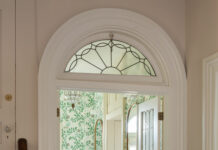In the restaurant business, there are front-of-house guys, then there are kitchen guys,” says designer Patrick Sutton, 54. He’s sitting at the dining room table he bought at a Paris flea market. It’s a gray day, but the light in his place is ethereal. The table in his dining area overlooks his vast-feeling dark-walled living room, which overlooks the boats on the water in Fells Point. After a beat, he tells me, “I’m a kitchen guy.”
Sutton has just explained to me how he put together the nearby living room coffee table that displays his rotating collection of art books in tidy, visually pleasing stacks. In Eastern Europe, he found a team of artisans who do “old inlaid floors” and commissioned a tabletop for which he would later design a steel base. A kitchen guy, he likes to roll up his sleeves and participate in a design’s planning and banging out.
Sutton’s also interested in making a house a livable space, a home, which is why he loves his two Verellen couches that are about as comfortable as twin beds.
“This whole family ends up taking naps or spending the night: [my wife] Tracy, the dog [Stella] and my kids,” Sutton says. “You can let the dog jump up on the sofa and it’s not going to worry you.”
Sutton, who grew up in New York but traveled broadly from an early age—his father a travel writer for The Saturday Review, his mother a professional dancer—comes across as more down-to-earth than I expect given his bio. Sutton is established locally as the visionary who designed a luxe Pazo for Foreman-Wolf, for example, and the designer behind Kevin Plank’s new $70 million Sagamore Pendry Hotel in Fells, and of course, he still works a lot of national and international gigs. But he says he loves to work locally, and feels more inspired than ever about the big-picture possibility for Baltimore design.
“When we delivered Pazo for the first time, people came into the restaurant and felt this was a very exciting turning point,” he says. “They wanted to dress up! It was a paradigm shift.
Before that, people said to me, ‘I don’t want to put any money in—people won’t appreciate it in Baltimore.’ But Foreman did. And that changed things. People are starting to realize that Baltimore can have what every great city has.”
The designer moved here in 1985 after earning an architecture degree from Carnegie Mellon—he was looking for a city to call his own, a way to get out from under his father’s revered name, in one sense. In 2008, Sutton and his then-girlfriend, insurance exec Tracy Sutton, 44, and Sutton’s two sons from his first marriage were taking a water taxi ride when they first caught sight of the five-story waterfront townhome development in which the couple now resides.
“Because of the recession, the price had dropped from ridiculous to semi-ridiculous,” Sutton says, grinning. “I couldn’t live like this in New York. Baltimore’s an easy place to live.”
His appreciation for the precise place in which he currently finds himself seems to echo room to room in Sutton’s very tall home (my quads ached the day after I toured). Each floor features open-plan rooms that flow into one another, and yet each space has an identity all its own—in fact, each corner sometimes seems to have its own story, from the fourth-floor “hideaway” movie room’s wall of art pieces to the playful, bright green “seat-belt chairs” (yes, made from stretchy seat belts) that flank the kitchen table and echo the fresh living plants that Sutton has arranged in massive vases.
“It’s so important to allow people to feel connected to the space,” Sutton tells me, referring to his professional life, elaborating on his description of meeting new clients and asking them endless questions in order to build a narrative that will help him better choose design elements. “I actually write a narrative in many cases—for this [hotel] project with Kevin Plank, for example. You ask yourself what story you’re telling here. My dad, too, had to find the there there.”
If I were charged to tell Sutton’s personal story in a very limited number of words, which I suppose I am, which isn’t simple, I’d describe his marriage story first—the fact that he and Tracy love to hit Art Basel and find agreed-upon pieces for their home. I’d mention his affection for Stella the dog, and how she follows Tracy floor to floor. I’d mention the first-floor bedroom you encounter upon entrance that’s outfitted in elegant Ankasa bedding for Sutton’s son. I’d mention Sutton’s penchant for mixing textures, his passion for nature—I’d explain that his cork wall in the living room was an “emotive decision,” as he says, which makes the room feel laid-back and organic to a new visitor. I’d describe Sutton as a kitchen guy who designed his own rooftop kitchen very recently so that he and Tracy wouldn’t have to schlep dirty dishes all the way downstairs after a weekend dinner on the roof with close friends. I’d say Patrick Sutton’s an artist.
[tie_slideshow]
[tie_slide]
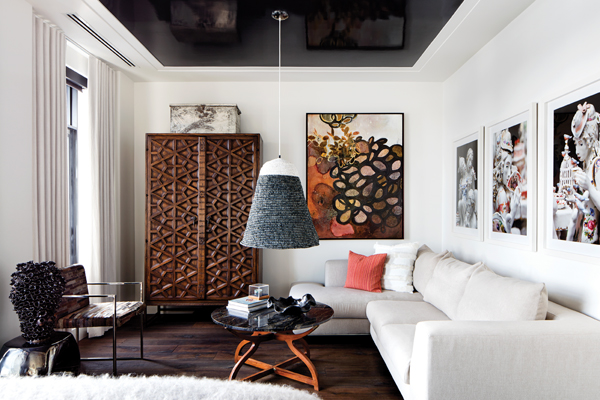
[/tie_slide]
[tie_slide]
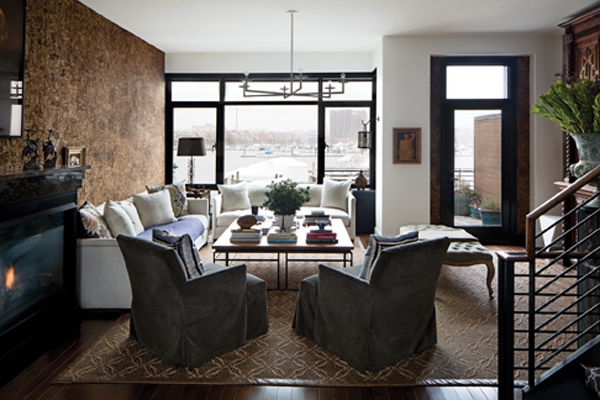
[/tie_slide]
[tie_slide]
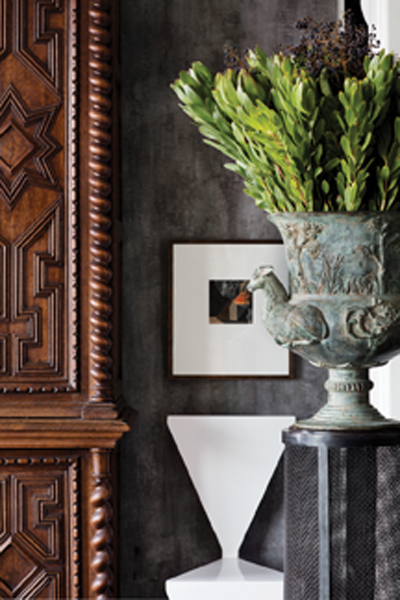
[/tie_slide]
[tie_slide]
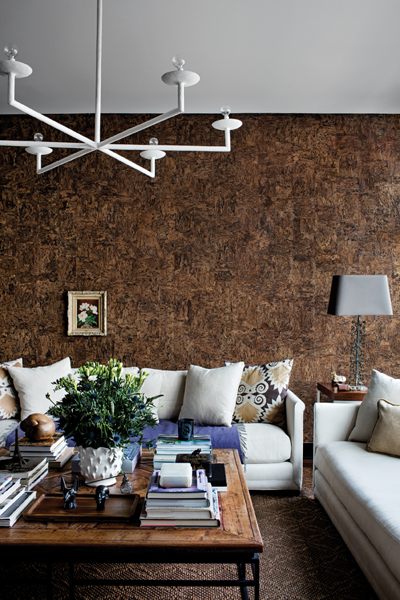
[/tie_slide]
[tie_slide]
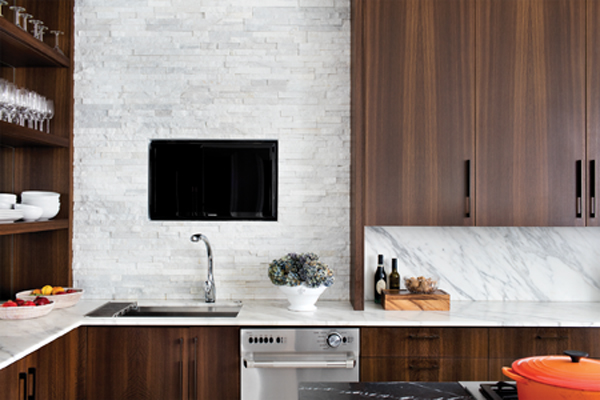
[/tie_slide]
[tie_slide]
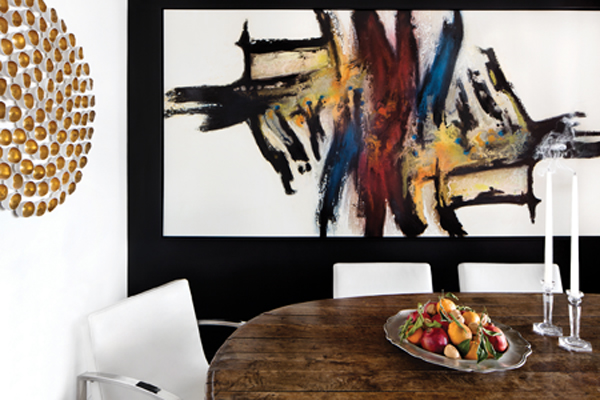
[/tie_slide]
[tie_slide]
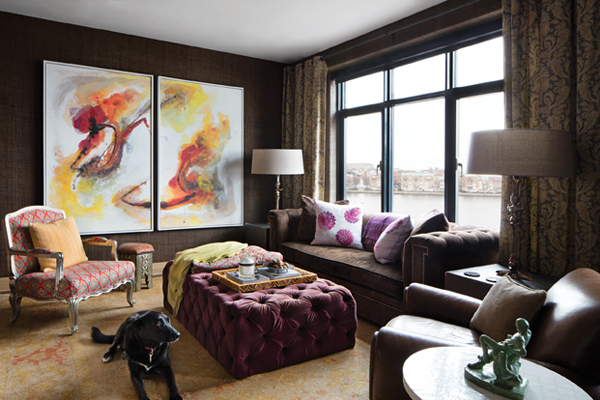
[/tie_slide]
[tie_slide]
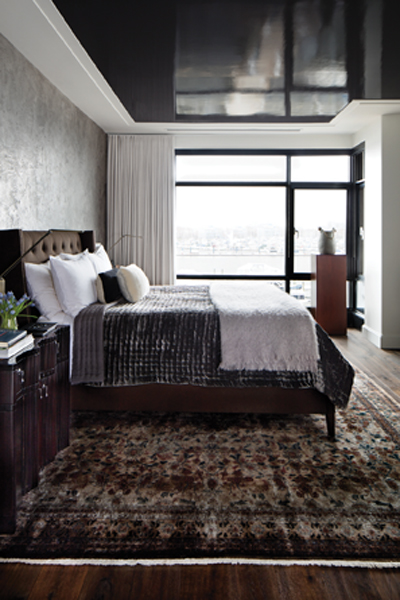
[/tie_slide]
[tie_slide]
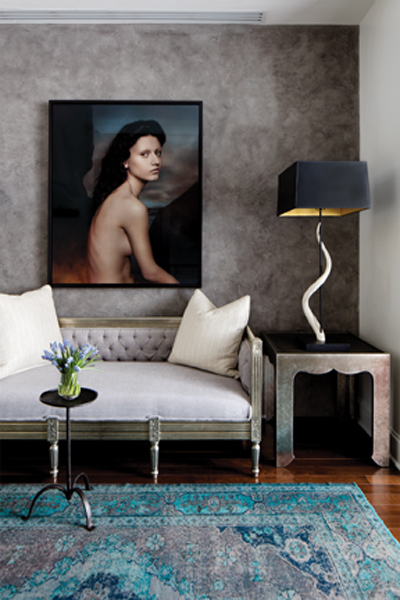
[/tie_slide]
[tie_slide]

[/tie_slide]
[tie_slide]
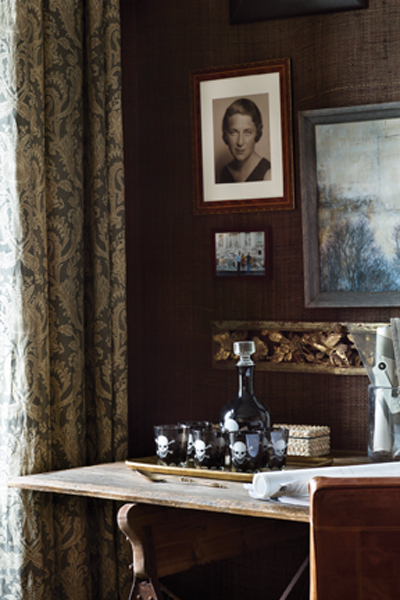
[/tie_slide]
[/tie_slideshow]


